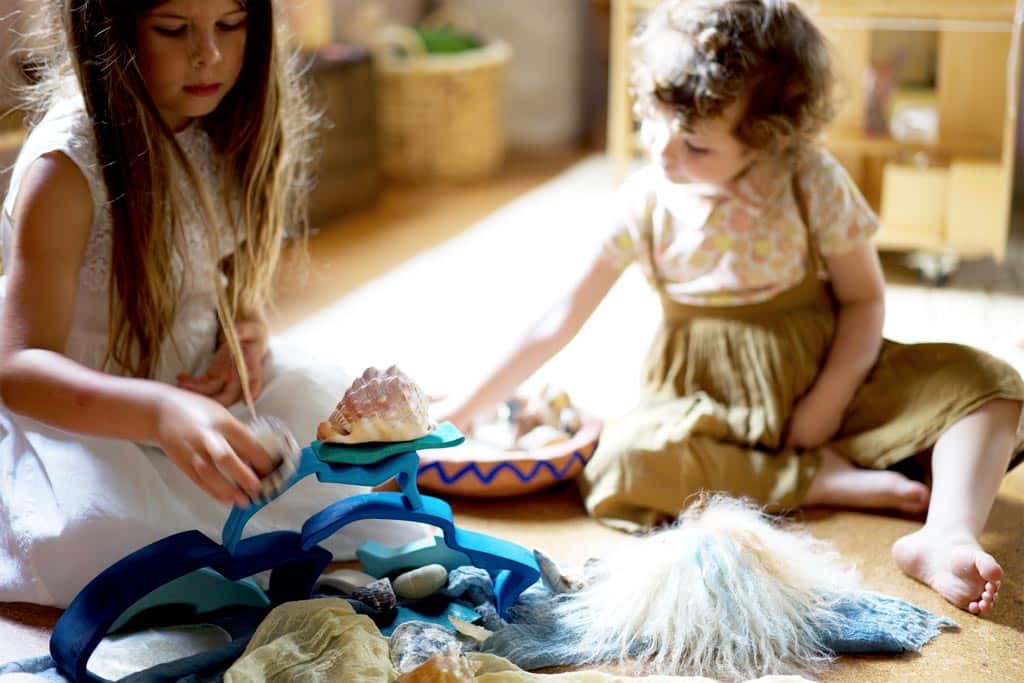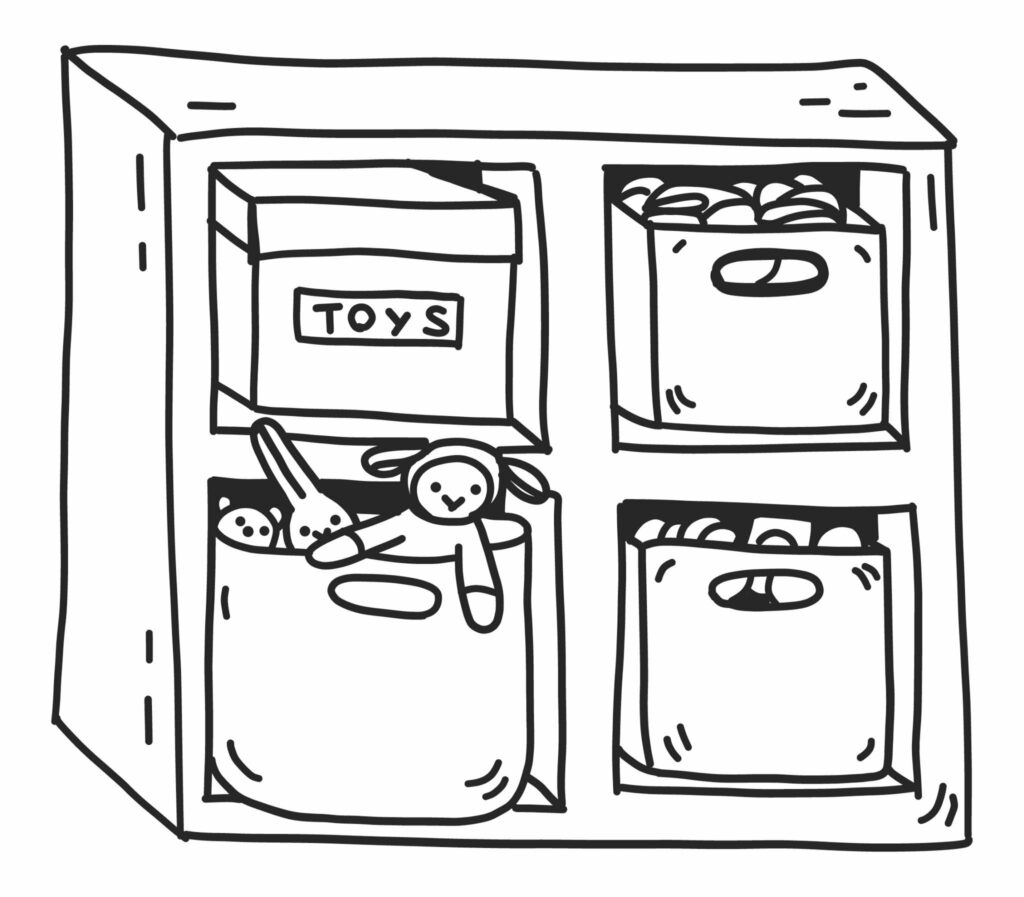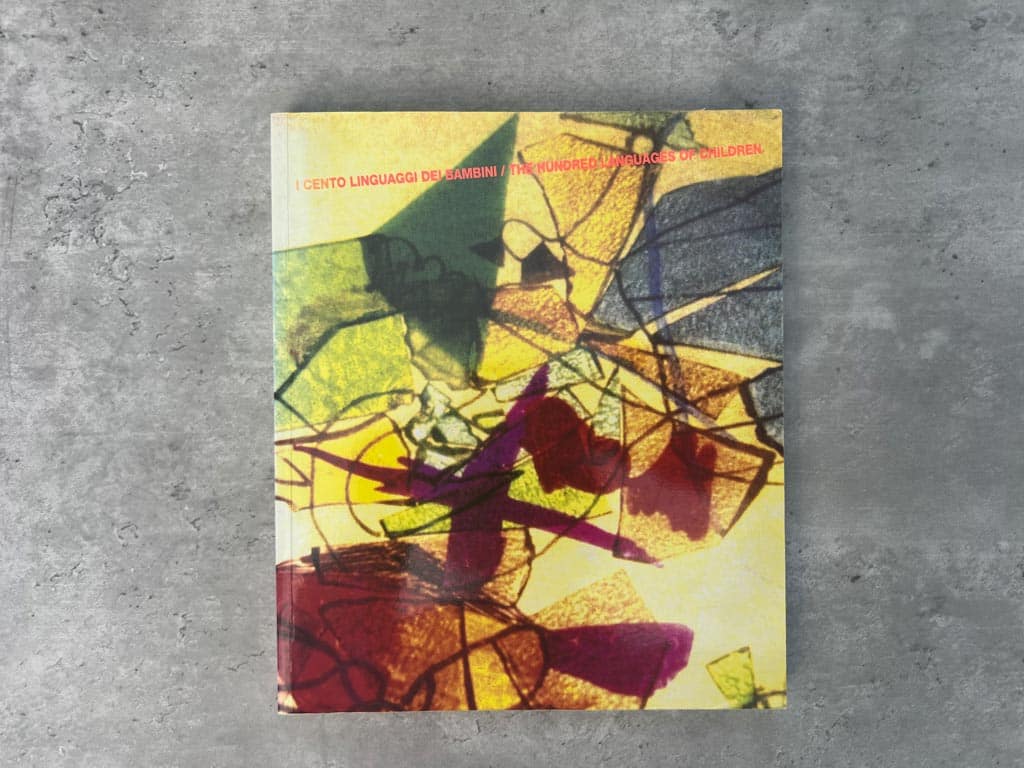The environment in which your child spends their time has a direct impact on their development and what they learn. This refers not only to the people they encounter and the situations related to them but also to the entire surrounding space. Seemingly trivial elements—such as the arrangement of furniture, the type and organization of toys, or even the decorations on the walls—play an educational role. In the Reggio Emilia philosophy, the environment is regarded as one of the three main teachers of a child, alongside parents and educators.
In this article, we will explore the key principles of the Reggio approach and offer practical tips on how to create a home environment that fosters exploration, creativity, independent thinking, and self-confidence. In short, a play area that nurtures a child’s development.
What Is the Reggio Emilia Approach?
The Reggio Emilia approach was developed after World War II by Italian educator Loris Malaguzzi and parents from the surrounding villages of Reggio Emilia in Italy. This philosophy is based on the belief that children have “a hundred languages” through which they can express their ideas, emotions, and creativity, and they should be allowed to do so. Love for children, courage to embrace change, and the desire for a democratic environment for the youngest contributed to the creation of the first innovative school. The validity of its principles has been confirmed by scientific discoveries on child development, and this educational method has become an inspiration for early childhood education institutions in many countries, especially in Europe.
Key principles of the Reggio Emilia approach include:
- The Image of the Child: Children are seen as competent, inquisitive, and capable of directing their own learning. They are naturally hardworking, motivated, and resourceful.]
- Collaboration and Communication: Children learn through numerous interactions with people and their environment.
- The Role of the Teachers: Parents and pedagogues are not merely transmitters of knowledge but are partners, nurturers, and guides who stimulate thinking and foster exploration.
- The Environment as the Third Teacher: The physical space plays a significant role in supporting children’s learning, encouraging exploration, and fostering relationships. Attention is given to the beauty and careful arrangement of materials in the environment.
- Progettazione, or a flexible curriculum: The learning plan is not predetermined but is developed organically through observing the children, their needs, and interests. The child leads the learning process, while the caregiver provides support, experience, and information.
- Documentation and Reflection: Children’s work and progress are documented to better understand their learning processes, ideas, and interests.
Considering these principles, let’s explore how they can be applied to create a Reggio Emilia-inspired play space at home.

Setting the Foundation: The Role of the Environment
Research on the human brain shows that it develops best through independent, self-directed activity, driven by interest and at a personal pace. These findings contrast with the common view of a child as an “empty vessel” into which adults must pour knowledge based on their own ideas, in a time and manner they dictate.
The Reggio Emilia philosophy is founded on the belief that children are capable, curious about the world, and full of potential. They can construct knowledge on their own (rather than merely absorbing it from adults) in a supportive environment. With the opportunity for free, independent exploration and minimal guidance from adults, little ones can grow, acquire knowledge, and develop new skills.
As a result, great importance is placed on the design of the environment in which children spend their time. The environment, seen as a teacher, should be inspiring, spark creativity, encourage exploration, and reflect core values.
1. Define the Space
Start by identifying a dedicated area in your home where your child can play, explore, and create. This space doesn’t need to be large, but it should be well-organized, flexible, and designed with intention. Consider a corner of a living room, a portion of a little one’s bedroom, or a quiet nook that can be transformed into a dynamic Reggio-inspired learning environment.
2. Natural Light and Colors
Natural light plays a critical role in creating a calming and welcoming space. Whenever possible, position your play area near windows to allow sunlight to brighten the space. The use of neutral colors—such as whites, soft grays, and natural wood tones—will help create a serene environment and make the materials and activities stand out.
Subtle colours have many benefits—they don’t overwhelm children, they connect to nature, and they spark creativity. Of course, there’s nothing wrong with bold colours, but just as we often find a multitude of colours and patterns overwhelming and feel more comfortable in harmonious interiors, children also find it easier to focus, calm down, and create when the surrounding colours are thoughtfully chosen. Vibrant colours can serve as inspiring accents rather than chaotically filling the entire space.

3. Flexible Furniture and Layout
Flexibility is key in a Reggio-inspired play space. Choose furniture that can be easily moved or reconfigured to accommodate different activities. Low, easily accessible shelving allows children to reach materials independently, reinforcing their sense of autonomy.
To create a comfortable play space, it’s essential to have at least one child-sized table where your child can engage in play or work on projects. However, not everything will be done at the table. In addition to a hard surface, a soft, inviting space on the floor is also important—make sure to provide a cozy rug or mat, and you can also add some soft cushions.
Let your child be a co-creator of the space—observe, listen, and adjust it as needed to meet their evolving needs and passions.
4. Organization and Accessibility of Supplies
For children to “speak in one hundred languages,” it’s important to provide them with a variety of tools for expression. At the same time, the environment shouldn’t be overwhelming or overstimulating. How can this be achieved? Experiment with the number of available items and the way they are presented. The environment should be diverse, but not chaotic or overwhelming. You can minimize the number of toys by focusing primarily on open-ended materials, complementing them with close-ended toys. You can read more about toy organization in our Guide.
It’s a good idea to sort toys by category and use transparent containers or jars for storage. You can also label them (e.g., by attaching a picture of the contents) or use written labels. This makes it easier to keep track of the many small items.
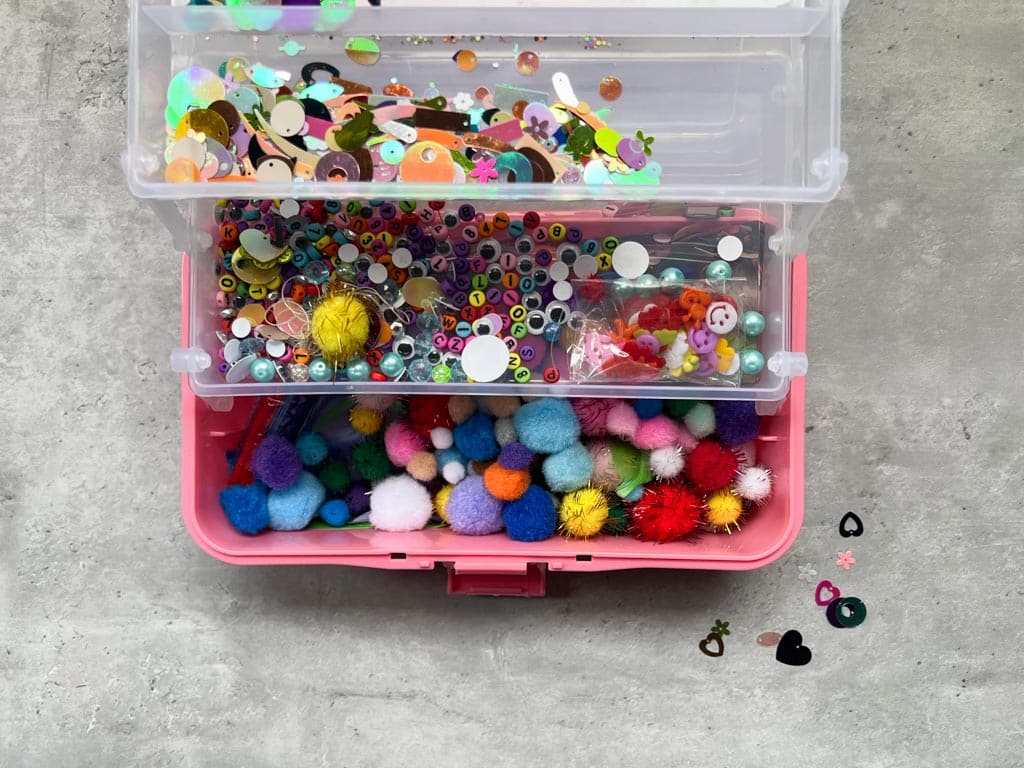
How to Equip a Play Space? Key Elements
We’ve prepared the key categories of items to consider when planning Reggio Emilia inspired space. You don’t need many items, but it’s important that they are varied, supporting development in different areas.
1. Open-Ended Materials
Open-ended materials are essential for fostering a child’s creativity. These materials encourage experimentation, critical thinking, and expression. Play with these materials can take many different directions. Children are naturally imaginative and creative, and this potential needs to be nurtured. This type of play doesn’t have set rules—children make their own choices, test their ideas, and freely explore without a specific outcome in mind. When children invent something on their own, they feel a sense of satisfaction and pride.
A child engaged in this type of play will be better at problem-solving in the future and will also trust themselves and their ideas more.
Examples of open-ended materials include:
- Blocks and Building Materials: Wooden blocks, cork, or even recycled cardboard can be used for building and constructing in countless ways.
- Artistic expression elements: Both art supplies, musical instruments, and costumes will serve as a foundation for exploring art and as wonderful tools for expressing ideas and emotions.
- Loose Parts: Small items like beads, pipe cleaners, wooden discs, marbles, wooden alphabet letters and numbers can be used in countless ways. They can be sorted, stacked, arranged, and incorporated into imaginative play. Also use items you already have at home—clothespins, buttons, small mirrors, or rubber bands.
- Home corner items: Your child likely already has a play kitchen, miniature appliances, or maybe a small workshop or doctor’s kit. These elements allow children to role-play daily activities and help develop social skills.
- Figures: Dolls, animal figurines, as well as cars or buildings—these elements act as an invitation to “small world” play, allowing for a different storyline each time.
It’s important to be mindful not to stifle a child’s natural curiosity with an excess of modern toys powered by batteries instead of imagination.
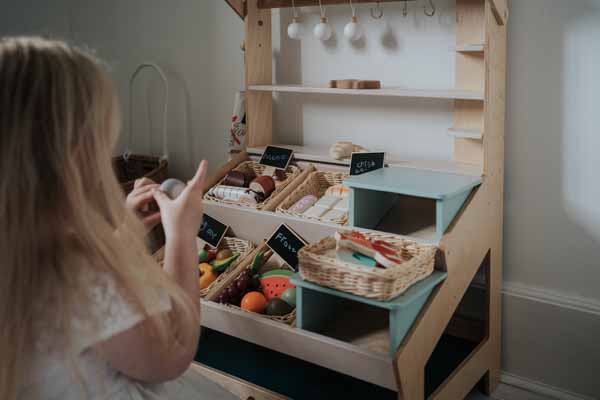
2. Incorporating Nature
Nature plays a significant role in the Reggio Emilia approach. Natural materials encourage children to explore the natural world and stimulate sensory development. Introducing elements of nature into the play space helps a child connect more closely with the real world around them.
Using furniture and toys made from natural materials is also generally healthier for the child and better for the environment. Natural objects often last longer, feel more pleasant, and provide a richer sensory experience for touch or sight.
Some ideas for incorporating nature into your play and learning space include:
- Natural decorations: Experiment with natural elements in your child’s space—these could include traditional, safe potted plants, a suspended tree branch, fresh flowers, and more.
- Toys made from natural materials: Choose toys made from natural resources—wood, bamboo, natural rubber. Fabrics like cotton, natural felt, or linen are all excellent choices.
- Natural loose parts: Leaves, shells, twigs, stones, pine cones, seeds, flowers—you can create a dedicated corner for storing and displaying these nature treasures, which can evolve throughout the year.

3. Other Elements of the Play Space
In addition to the categories mentioned above, there are a few other important elements worth including in your child’s play space that support their development in various areas:
- Close-ended Materials: Supplement the space with materials such as Montessori tools, puzzles, brain teasers, and games. These types of materials teach problem-solving, perseverance, and the importance of finishing tasks.
- Reading and Relaxation Area: Create a cozy spot for reading and relaxation, which can be as simple as placing some cushions on the floor near a shelf with a variety of books. This will be a place where your child can unwind, relax, and develop their reading skills, both independently and together with you.
- Gross Motor Skills Area: Children have a strong need for physical activity, which we can’t always meet by going outdoors. Include a space where your child can practice physical skills. A simple gymnastics mat, climbing ladder, soft couch, or a section of the carpeted floor where you can set up a small obstacle course will all help greatly in developing strength, coordination, and overall physical fitness.
- Display Area for Artwork/Documentation: It’s worth dedicating at least a part of one wall to display your child’s work. This not only serves as a wonderful way to appreciate their efforts but also plays a key role in documentation and reflection.
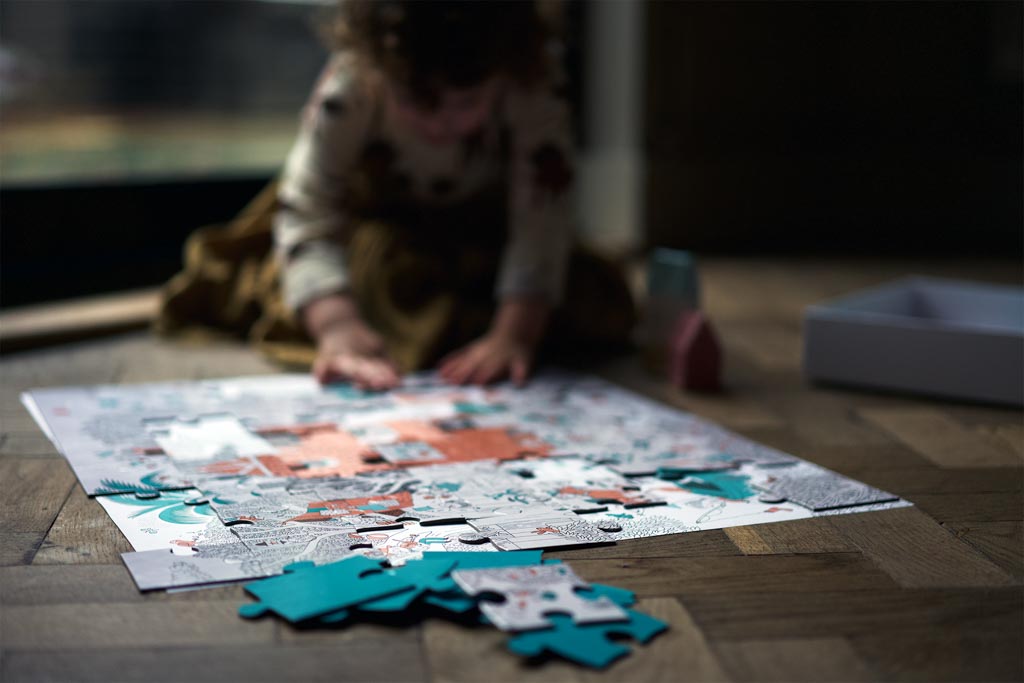
Nurturing a Culture of Curiosity
Children are in constant dialogue with their environment, and the environment where your child spends a lot of time is certainly your home.
A well-designed home space encourages independent thinking, invites questions, and provides opportunities for creative expression. It also serves as a base for your child to explore and develop their interests.
By embracing the principles of the Reggio Emilia approach, you are not just creating a space for play—you are fostering a culture of inquiry, creativity, and respect for the child’s ideas. You are laying the foundation for a life filled with curiosity and fulfillment.

